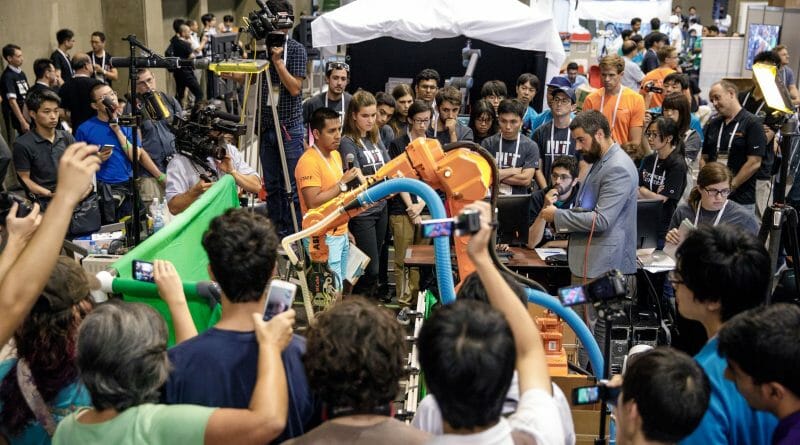Amazon Discusses Warehouse Automation and Machine Learning
Source: https://spectrum.ieee.org
By
The Amazon Robotics Challenge was created to inspire the next generation of inventors and we were blown away by what we saw. It was so inspiring to see what these teams brought to the table that it’s hard not to be optimistic about the future of robotics. Brad Porter, V.P. of Robotics at Amazon, about the latest advances in the field and how his team is using machine learning to make its robots smarter.
There have been so many advances in robotics and yet, we still are in the very beginning stages of innovation and we’re still learning how to best work with robotics. At Amazon, we have to consider the range of inventory items we’re dealing with and when it comes to robotic solutions, that in and of itself, is a challenge for us. We also have to consider the scale in which we deploy robots. It’s great if we test a robot in a small environment and it works perfectly, but we need it to also work in a larger environment without disrupting the entire fulfillment process. I’m so impressed with what my team has been able to achieve in the past few years and I’m excited to see how they overcome these obstacles.
Today we have more than 100,000 drive units deployed throughout our global fulfillment network. But many forget those aren’t the only robots we have. We have deployed around 30 palletizer systems, and another popular robot you might see in our fulfillment centers is called RoboStow—a 6-ton robot that has the ability to move pallets of products up to 24-feet high and directly onto the larger drive units.
We have robots we call drive units that use sophisticated route planning to bring items to our associates to pick customer orders. We started working with these robots in 2012, we’ve continued to innovate and find new ways to improve these technologies and make them more efficient. These robots have also helped us maximize space and increase areas in which we can store more inventory. The team also has made them larger in size so they are able to move actual pallets of product in addition to the smaller drive units that move inventory pods. In some ways people are surprised that robots in our buildings, for the most part, don’t look like what you see in movies. Our buildings look like high-tech manufacturing plants with storage systems and conveyors. The robots blend in seamlessly with other more traditional industrial automation.
The revolution is how much high-tech we can pack into a robot under the covers. The combination of high-speed wireless networks, batteries, higher-quality sensors at lower-costs and more compute horsepower in smaller packages allows us to rethink traditional solutions, like fixed conveyor belts with more flexible solutions like robotic drives, while allowing us to more flexibly rethink how processes work. The result is we’re able to make these systems more autonomous and more collaborative with humans.
https://www.amazonrobotics.com/#/events

